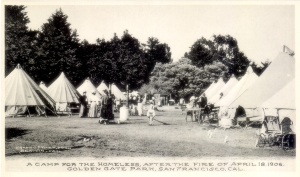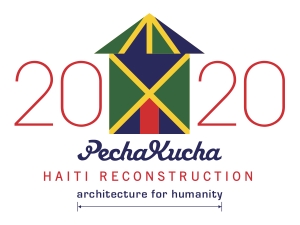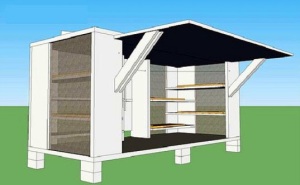A Placemaking Journal
You Betcha! It’s PechaKucha…
 It used to be that I would claim to be too young to be cynical, but those days have long passed. The change is becoming apparent as I begin to prepare for a local PechaKucha event I’m participating in this weekend. It’s Global PechaKucha Day for Haiti to raise money and awareness for Haiti through Architecture for Humanity. It is important to keep our public awareness momentum going as the devastation in Haiti will quickly be forgotten as soon as Tiger Woods or the OctoMom tees it up once again and recaptures the attention of our “utopia of overfed clowns riding in clown cars around the plasticized cartoon outskirts of our ruined cities,” to quote James Howard Kunstler.
It used to be that I would claim to be too young to be cynical, but those days have long passed. The change is becoming apparent as I begin to prepare for a local PechaKucha event I’m participating in this weekend. It’s Global PechaKucha Day for Haiti to raise money and awareness for Haiti through Architecture for Humanity. It is important to keep our public awareness momentum going as the devastation in Haiti will quickly be forgotten as soon as Tiger Woods or the OctoMom tees it up once again and recaptures the attention of our “utopia of overfed clowns riding in clown cars around the plasticized cartoon outskirts of our ruined cities,” to quote James Howard Kunstler.
PechaKucha has become a national designers phenomenon in itself. The idea is that the format keeps speakers on track, short, and to the point at 20 slides x 20 seconds each. The format is now commonly used at APA, CNU and AIA conferences with great excitement. Having done a few here in San Diego and seeing more across the nation has led me to believe that it has limited effect. Andres Duany once critiqued a presentation of mine as having too many slides. He challenged me to speak for as long as possible with as few slides as possible. A picture is worth 1,000 words and a really good picture should tell a whole story. 20 pictures in 6 minutes 40 seconds is a bit excessive, but hey, it’s totally hip and cool.
From the national press release: In response to the catastrophic magnitude 7 earthquake that tore the country apart, the global PechaKucha family is coming together with Architecture for Humanity to lend a hand in rebuilding Haiti. The global event will stick to its now renowned presentation format: 20 images, 20 seconds – but will be taking place in 200 cities, generating 2,000 presentations and more than 200,000 spectators simultaneously. All proceeds to benefit PechaKucha for Haiti Fund, from which all proceeds go directly to Architecture for Humanity 501(c) and will be used solely to build buildings. Design work has already been paid for by donations.The reason our local chapter of Architecture For Humanity invited me to this international event is due to my experience during the Mississippi Renewal Forum Charrette. They wanted my Hurricane Katrina experience and acerbic perspective to pepper the PechaKucha night. The lessons learned were many. A few that have resonated are:
1) Andres Duany is right again … our teams aimed toward rebuilding too well too soon and were too empathetic with the local’s sense of loss. We wanted to rebuild their towns toward a restored beauty that hadn’t existed since Hurricane Camille and missed the step of simply inhabiting the area under healthy and safe conditions for human welfare. The recent Haitian proposals are more realistic in assessing the conditions and immediate need. The prefabricated “core house” proposed by Duany Plater-Zyberk & Co. encapsulates the lessons learned from the difficult Katrina Cottage experience. The easy-to-assemble, easily transferable, dignified structures are being considered as long-term housing appealing to the cultural structure of Haiti.
The handwritten caption reads: 'A camp for the homeless, after the fire of April 18, 1906. Golden Gate Park, San Francisco, Cal.' Credit: alamedainfo.com
3) In San Diego we will plan, codify, re-plan, re-code, re-test, and change building codes over and over again in response to earthquake events. Experts predict that over the next 30-years a 9.0 quake will hit California and kill 3,000 people. However, over that same amount of time, 10x that many people will die in California from obesity, diabetes and other health issues associated with a lack of physical exercise — but our local codes and planning will not be subjected to the earthquake-level rigor.
With that point, I am not trying to make light of the fact that our building codes allow for buildings to better survive earthquakes and only kill 3,000 rather than the 300,000 persons in Haiti. However, I am incredulous that the longer term is less emphasized in planning and coding than the one-off catastrophic event. We must plan for both short-term and long-term hazards with equal rigor.
If you’re in San Diego this weekend, our PechaKucha event will take place on February 20, 2010 at the Whistle Stop Bar, 2236 Fern Street in South Park, and will be webcast worldwide between 8:00 – 9:00 p.m. in a unique “WAVE” presentation. Know that my wonderful wife and I had our wedding reception on St. Patrick’s Day at the Whistle Stop Bar and it is a block away from my home. This reminds me of how fortunate I am, and maybe I should lighten up…
— Howard Blackson



